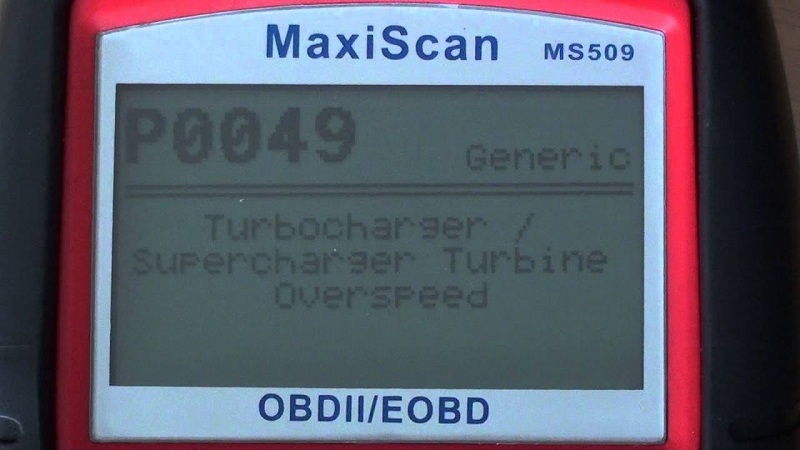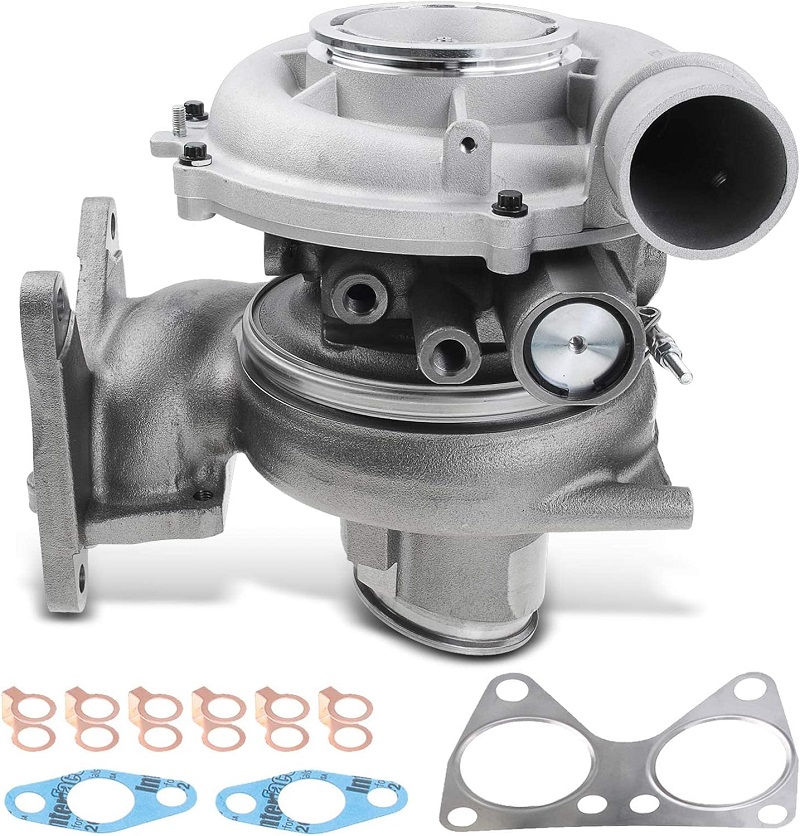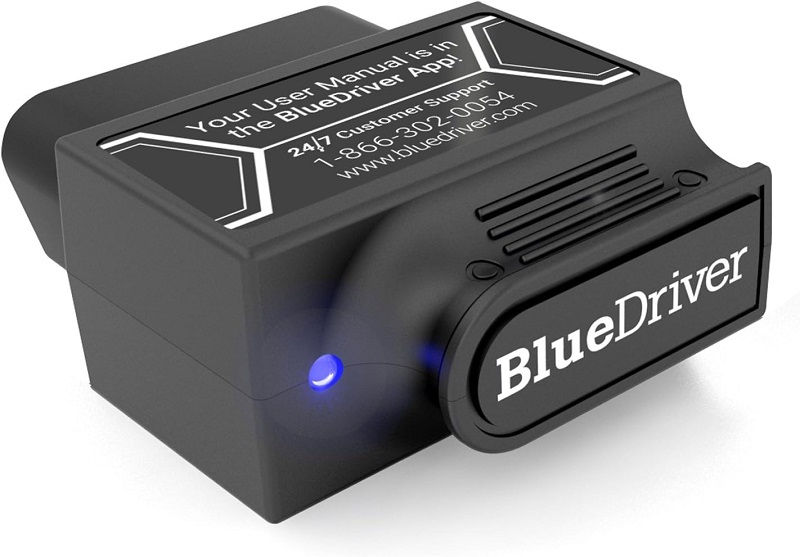This post contains affiliate links. This means I will make a commission at no extra cost to you should you click through and make a purchase [ “As an Amazon Associate, I earn from qualifying purchases.” ]. Read the full disclosure here.
Navigating the P0049 Trouble Code: Turbocharger/Supercharger Turbine Overspeed GuideMechanic.Com In the realm of automotive diagnostics, the appearance of the P0049 trouble code serves as a notable signal, indicating potential issues within the turbocharger or supercharger system.
While its alphanumeric nature may appear bewildering, this code encapsulates a specific concern demanding attention from both drivers and automotive technicians.
In this comprehensive article, we embark on a journey to unravel the complexities of the P0049 trouble code, exploring its origins, symptoms, and effective solutions.
See Also: P0047 Turbocharger/Supercharger Boost Control “A” Circuit Low
P0049 Turbocharger/Supercharger Turbine Overspeed
Understanding the P0049 Trouble Code:

P0049 is categorized as an OBD-II diagnostic trouble code, signifying an anomaly related to turbocharger or supercharger turbine overspeed.
Specifically, it denotes a condition wherein the rotational speed of the turbine exceeds predetermined limits, triggering a fault code and necessitating further investigation.
P0049 Turbocharger/Supercharger Turbine Overspeed
Causes of P0049:
The emergence of the P0049 trouble code can be attributed to various underlying factors, including:
Boost Control System Malfunction:
An irregularity within the boost control system, such as a faulty boost control solenoid or sensor, can lead to excessive boost pressure, resulting in turbine overspeed and the activation of the P0049 code.
Wastegate Dysfunction:
A malfunctioning wastegate, which regulates the flow of exhaust gases to the turbine, can cause an imbalance in boost pressure, leading to turbine overspeed and the subsequent onset of the P0049 trouble code.
Mechanical Issues:
Physical damage or wear and tear to the turbocharger or supercharger components, including the turbine wheel, bearings, or shaft, can result in unrestricted rotation and turbine overspeed, triggering the P0049 code.
Software or Calibration Errors:
Incorrect engine management software or calibration settings can inadvertently lead to excessive boost pressure, causing turbine overspeed and the activation of the P0049 trouble code.
P0049 Turbocharger/Supercharger Turbine Overspeed
Symptoms of P0049:

The appearance of the P0049 trouble code may be accompanied by a range of noticeable symptoms, including:
Check Engine Light (CEL) Illumination:
The illumination of the check engine light serves as an initial indicator of a potential underlying issue. Upon diagnostic scanning, the P0049 trouble code is retrieved, prompting further investigation.
Reduced Engine Performance:
Excessive boost pressure resulting from turbine overspeed can lead to reduced engine performance, manifested as sluggish acceleration, diminished throttle response, and overall decreased power output.
Audible Whining or Whistling Noise:
Turbocharger or supercharger turbine overspeed may produce an audible whining or whistling noise, particularly under load or during acceleration, indicating abnormal operation.
Engine Knocking or Detonation:
In severe cases, turbine overspeed can lead to engine knocking or detonation, caused by the increased combustion pressure and temperature associated with excessive boost pressure.
P0049 Turbocharger/Supercharger Turbine Overspeed
Diagnosing and Addressing P0049:
Check out this BlueDriver Bluetooth Pro OBDII Scan Tool for iPhone & Android

Effectively diagnosing and remedying the P0049 trouble code requires a systematic approach, encompassing the following steps:
Code Retrieval:
Utilize an OBD-II scanner to retrieve the stored trouble code(s) within the vehicle’s engine control module (ECM), confirming the presence of the P0049 code for comprehensive assessment.
Visual Inspection:
Conduct a thorough visual inspection of the turbocharger or supercharger system, including the turbine assembly, wastegate, boost control components, and associated hoses and connections, for any signs of damage, wear, or leakage.
Boost Pressure Testing:
Utilize a boost pressure gauge or diagnostic tool to measure and monitor boost pressure during engine operation, ensuring it remains within specified limits and does not exceed thresholds indicative of turbine overspeed.
Wastegate Inspection:
Inspect the wastegate mechanism for proper operation and functionality, ensuring it opens and closes as commanded by the engine management system to regulate boost pressure effectively.
Turbocharger/Supercharger Component Evaluation:
Assess the condition of turbocharger or supercharger components, including the turbine wheel, bearings, shaft, and housing, for any signs of damage, wear, or mechanical issues that may contribute to turbine overspeed.
Software Calibration Check:
Verify the engine management software and calibration settings for accuracy and compatibility with the vehicle’s specifications, addressing any discrepancies or errors that may lead to excessive boost pressure.
Test Drive and Data Analysis:
Conduct a test drive to evaluate the vehicle’s performance and behavior under various driving conditions, analyzing data from the ECM and diagnostic tools to pinpoint any abnormalities or recurring issues associated with turbine overspeed.
Component Replacement or Repair:
Based on the findings of diagnostic testing and inspection, replace or repair any faulty or damaged turbocharger or supercharger components, boost control solenoids, sensors, wastegates, or related components as necessary to address the P0049 trouble code effectively.
P0049 Turbocharger/Supercharger Turbine Overspeed
Conclusion:
See Also: P0048 Turbocharger/Supercharger Boost Control “A” Circuit High
The P0049 trouble code serves as a diagnostic indicator, highlighting potential issues related to turbocharger or supercharger turbine overspeed.
By understanding its underlying causes, recognizing associated symptoms, and adhering to a structured diagnostic and repair process, drivers and technicians can effectively address turbine overspeed concerns, restoring optimal engine performance and functionality.
For those unfamiliar with automotive diagnostics or uncomfortable with DIY repairs, seeking assistance from qualified automotive professionals is always advisable, ensuring thorough and proficient resolution of the P0049 trouble code and associated issues.
- Project Trucks for Sale Cheap - July 1, 2025
- Salvage Title Trucks for Sale - July 1, 2025
- Restored Classic Trucks for Sale - July 1, 2025
